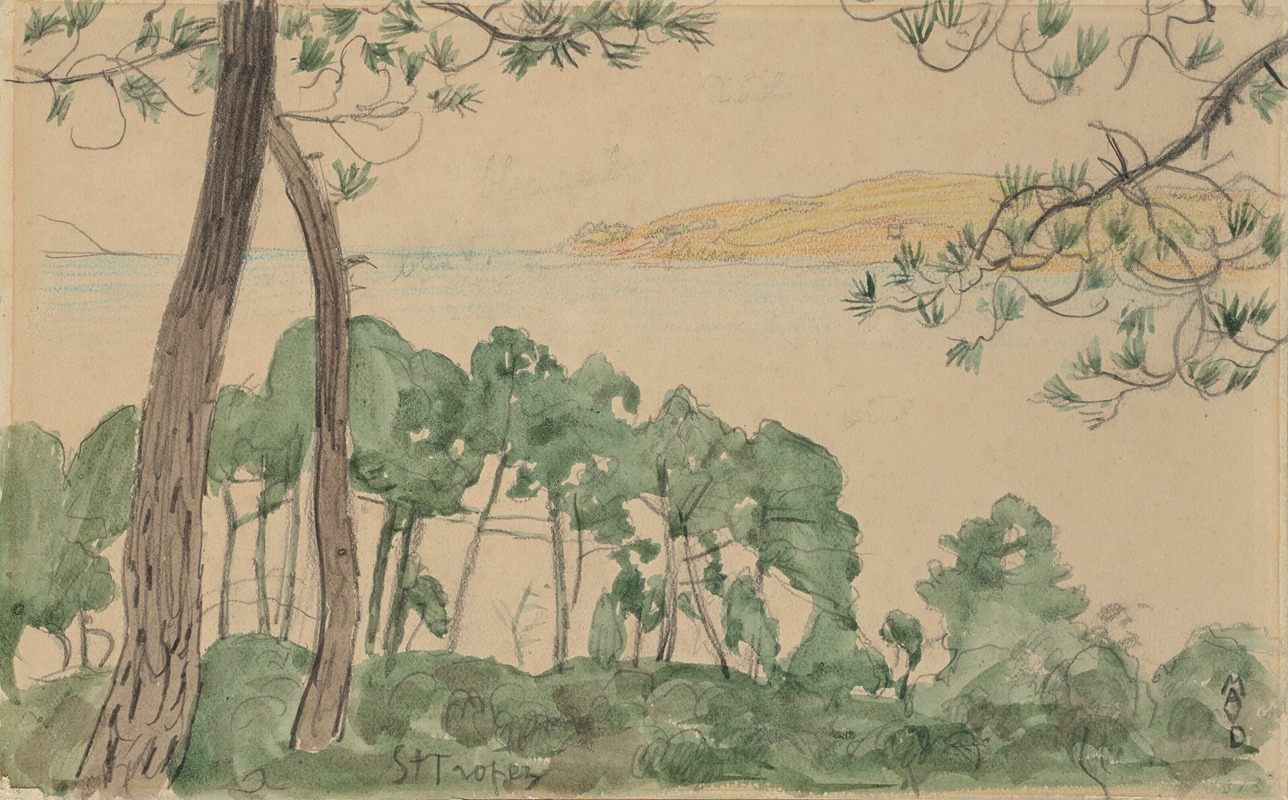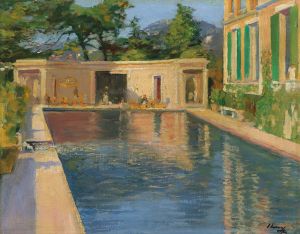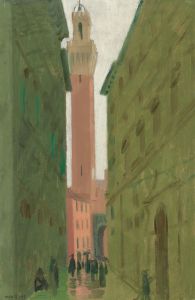
Saint-Tropez
A hand-painted replica of Maurice Denis’s masterpiece Saint-Tropez, meticulously crafted by professional artists to capture the true essence of the original. Each piece is created with museum-quality canvas and rare mineral pigments, carefully painted by experienced artists with delicate brushstrokes and rich, layered colors to perfectly recreate the texture of the original artwork. Unlike machine-printed reproductions, this hand-painted version brings the painting to life, infused with the artist’s emotions and skill in every stroke. Whether for personal collection or home decoration, it instantly elevates the artistic atmosphere of any space.
Maurice Denis, a prominent French painter and theoretician associated with the Symbolist and Nabi movements, created "Saint-Tropez" in 1893. This painting is one of his works that reflects his interest in capturing the spiritual and emotional essence of a scene rather than focusing solely on realistic representation. Denis was known for his belief that a painting is "a flat surface covered with colors assembled in a certain order," a principle that guided his approach to art.
"Saint-Tropez" depicts the coastal town of Saint-Tropez, located on the French Riviera. During the late 19th century, Saint-Tropez was a relatively quiet fishing village, far removed from the glamorous reputation it would later acquire in the 20th century. Denis visited the town and was inspired by its serene landscapes, Mediterranean light, and tranquil atmosphere. The painting reflects his characteristic style, which combines simplified forms, harmonious colors, and a decorative approach to composition.
In "Saint-Tropez," Denis employs a flattened perspective and a focus on the interplay of light and color to evoke the peaceful ambiance of the location. The work is notable for its use of muted yet warm tones, which capture the natural beauty of the region. The painting does not aim to replicate the scene with photographic accuracy but instead conveys an emotional and spiritual interpretation of the environment.
As a member of the Nabi group, Denis was influenced by the ideas of Paul Gauguin and Japanese woodblock prints, which emphasized flat areas of color and bold outlines. These influences are evident in "Saint-Tropez," where the composition is carefully structured, and the forms are stylized rather than detailed. The painting exemplifies Denis's belief in the decorative and symbolic potential of art.
"Saint-Tropez" is part of Denis's broader body of work that sought to bridge the gap between traditional and modern art. His contributions to the development of modernism and his role in the transition from Impressionism to more abstract and symbolic forms of expression have cemented his place in art history. Today, the painting is recognized as an important example of his artistic philosophy and his ability to capture the essence of a place through his unique visual language.
The painting is held in a private collection, and its exact details, including dimensions and medium, are less frequently documented in public records. However, it remains a celebrated example of Maurice Denis's innovative approach to art and his enduring influence on the development of modern painting.


















